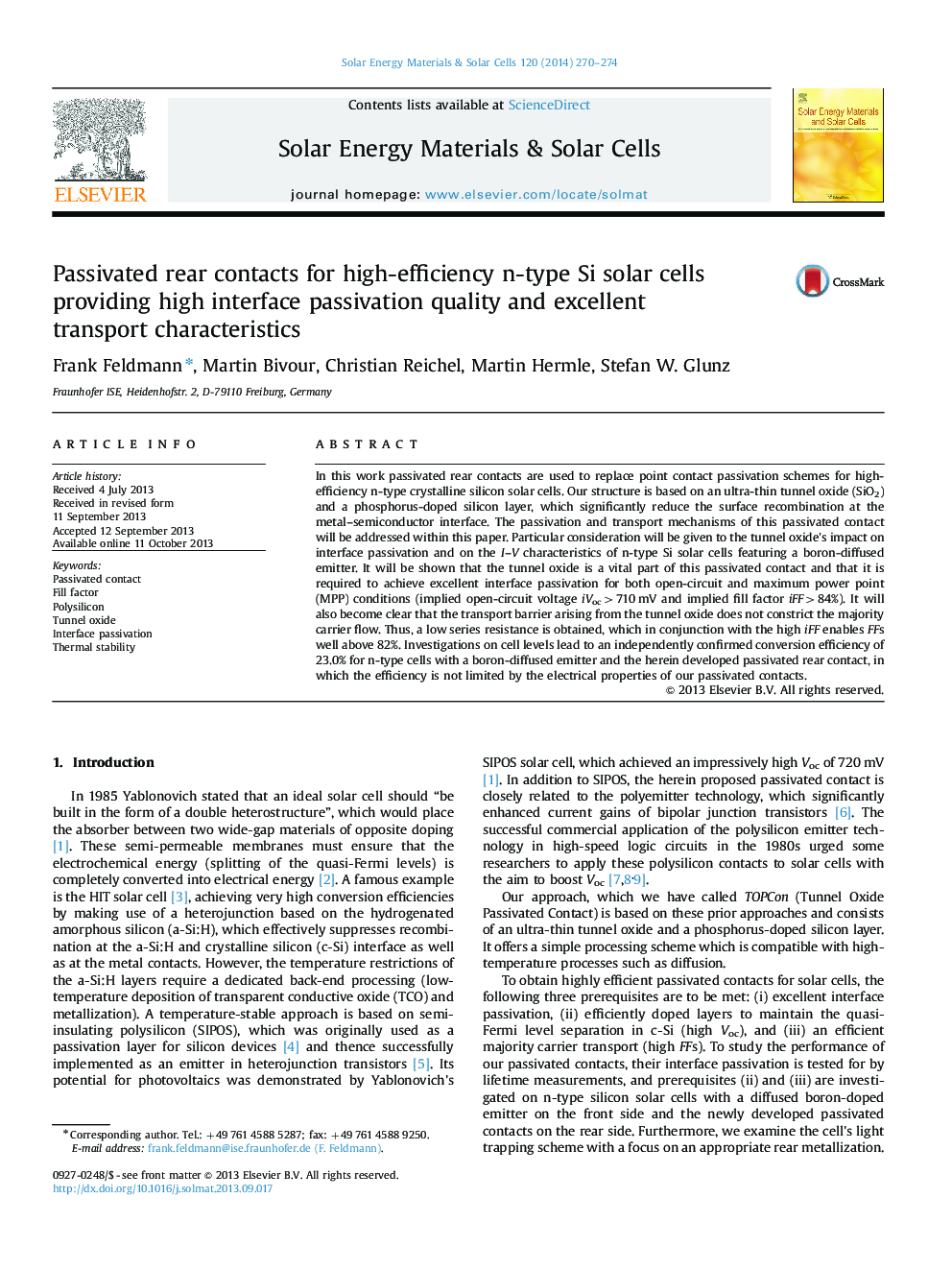| Article ID | Journal | Published Year | Pages | File Type |
|---|---|---|---|---|
| 10248728 | Solar Energy Materials and Solar Cells | 2014 | 5 Pages |
Abstract
In this work passivated rear contacts are used to replace point contact passivation schemes for high-efficiency n-type crystalline silicon solar cells. Our structure is based on an ultra-thin tunnel oxide (SiO2) and a phosphorus-doped silicon layer, which significantly reduce the surface recombination at the metal-semiconductor interface. The passivation and transport mechanisms of this passivated contact will be addressed within this paper. Particular consideration will be given to the tunnel oxide's impact on interface passivation and on the I-V characteristics of n-type Si solar cells featuring a boron-diffused emitter. It will be shown that the tunnel oxide is a vital part of this passivated contact and that it is required to achieve excellent interface passivation for both open-circuit and maximum power point (MPP) conditions (implied open-circuit voltage iVoc>710Â mV and implied fill factor iFF>84%). It will also become clear that the transport barrier arising from the tunnel oxide does not constrict the majority carrier flow. Thus, a low series resistance is obtained, which in conjunction with the high iFF enables FFs well above 82%. Investigations on cell levels lead to an independently confirmed conversion efficiency of 23.0% for n-type cells with a boron-diffused emitter and the herein developed passivated rear contact, in which the efficiency is not limited by the electrical properties of our passivated contacts.
Related Topics
Physical Sciences and Engineering
Chemical Engineering
Catalysis
Authors
Frank Feldmann, Martin Bivour, Christian Reichel, Martin Hermle, Stefan W. Glunz,
